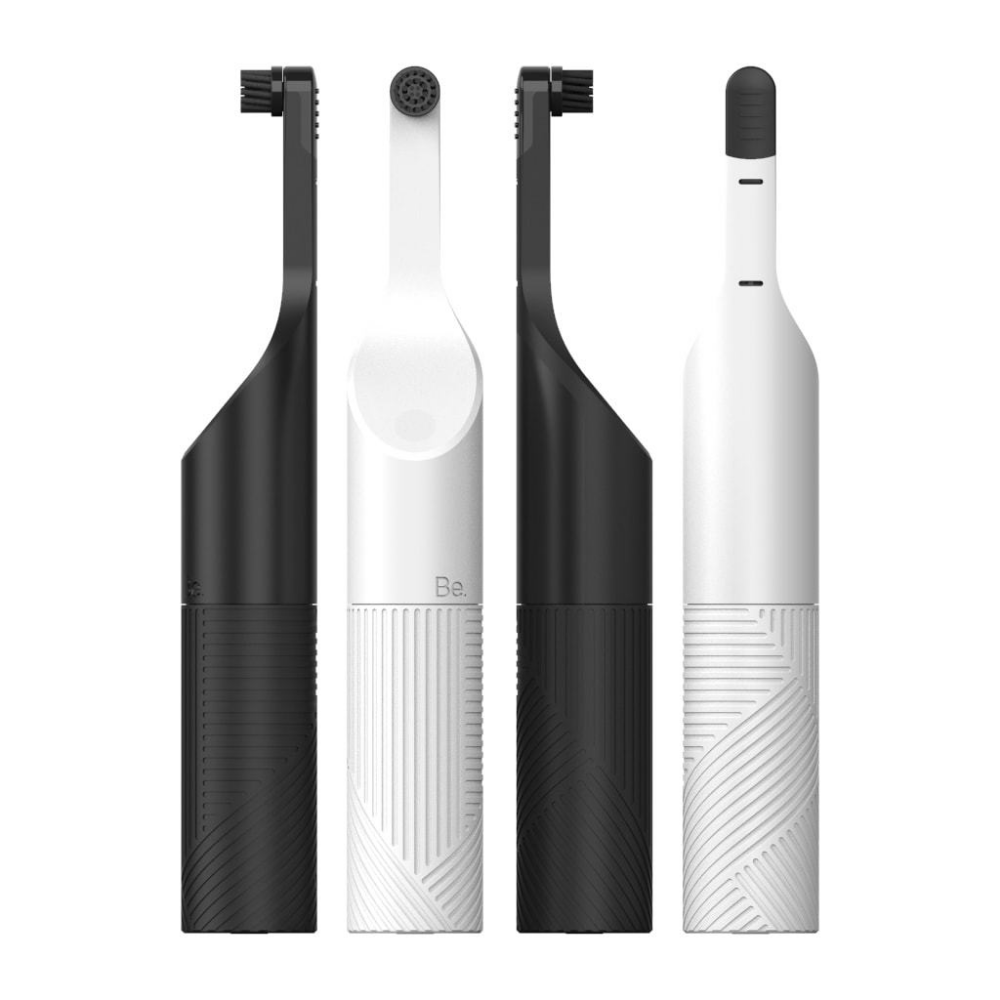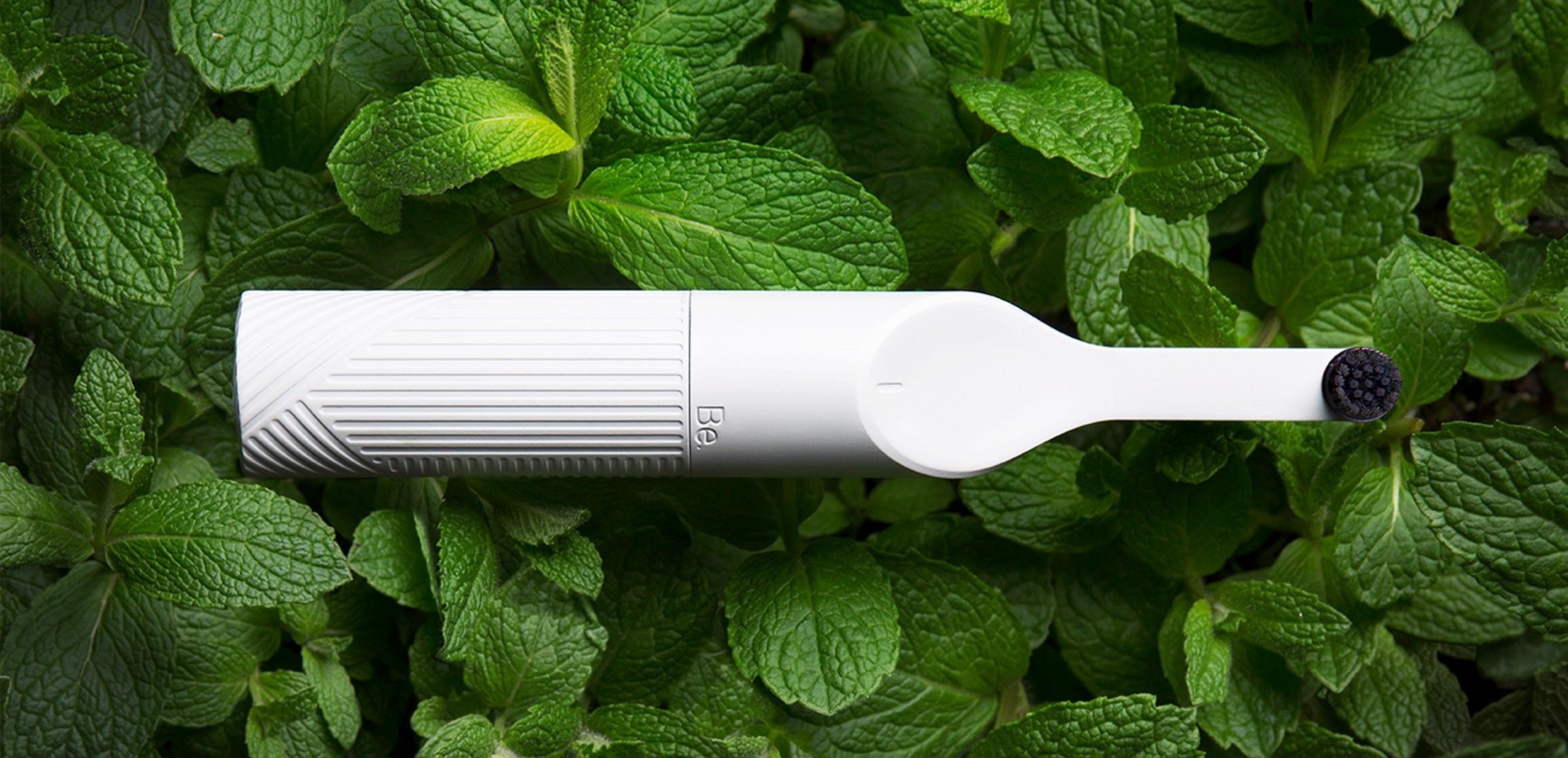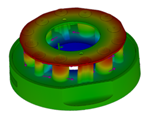CASE STUDY: NON-ELECTRIC OSCILLATING TOOTHBRUSH
![]()
THE CHALLENGE
A company based in providing environmentally conscious dental care products, had an innovative and ambitious product idea: to create a toothbrush that provided the improved cleaning performance of an electric brush without the environmental impact associated with battery-powered electronics. With a concept, they began creating goals for product performance, user experience, and industrial design. Moreover, they successfully marketed the concept and generated revenue to fund the development of their prototype.
However, they realized their own product development experience did not extend into the more complex mechanical design considerations associated with gear trains, dynamic mechanisms, and stored energy. Thus, they selected Simplexity to first characterize the brush-head drive mechanisms and their associated efficiencies. The first phase was to determine if it was even possible to convert a few turns of the handle of the brush into the small oscillations characteristic of electric toothbrush performance. Simplexity would ultimately design, assemble, and test the first functional product facing prototypes, as well as providing further NPI (New Product Introduction) consultations to help bring the design into production.

MECHANICAL ENGINEERING
We first started investigating the mechanical system design as the physical appearance of the exterior was well defined, but the interior was a complete blank slate. Guided by the energy usage models we created during the characterization of the brush head mechanisms, we brainstormed possible solutions for each major component: energy storage, energy input/output methods, and user interfaces.
The final design would use a steel power spring for energy storage utilizing both an input gearbox for converting hand winds into the energy stored in the power spring plus an output gearbox system to take that stored energy and convert it into the required brush head speed and torque. The first step was to run calculations to figure out how many usable turns and size requirements of a power spring would be needed to meet the goal of 120 seconds of operation, which equated to about 7200 oscillations of the brush head.
Due to our extensive experience with the myriad of available technologies, and with a few vendor contacts in each of these spaces, we were able to select the most viable options for each component and start designing a first prototype. Specifically, our experience in designing injection molded parts (especially gear train components) along with a proprietary gear design tool we developed allowed us to design custom gear trains that were optimized for efficiency, manufacturability, assembly, and strength. Additional use of engineering analysis and FEA on critical parts to validate cost-effective solutions for manufacturing ensured an optimized solution. The result of these optimizations allowed for a functional prototype that met the complex mechanical requirements.
Exploded view of the input system that allows the customer to safely wind the power spring. This system converts 1 user turn of the handle into 2 turns into the power spring. It also includes an input clutch system that limits the amount of torque a user can ultimately put into the system to prevent internal damage.
Finite Element Analysis (FEA) of polymer gear posts on a brush component to drive material selection and gear count
SYSTEMS ENGINEERING
A system level approach to the design of the brush was critical to successful function. This was because almost every component affected the function and performance of every other component. For example, the power spring selection was dependent on the power usage of the gear train as well as the brush heads, but the gear train was recursively dependent on the power spring’s output characteristics. By creating a system model using programs like Matlab, we were able to make analysis-driven design decisions. Making intelligent design decisions and creating a functioning prototype without considering the whole system would have relied heavily on trial and error and would have been unlikely to be successful the first time around. By doing the analysis work upfront, the customer saved significantly in material and design costs.
An additional critical role of systems engineering is the ability to identify the need for components or sub-assemblies that were not initially envisioned, such as the need for an output regulation assembly. While simulating the brush system’s output, it became apparent that the system’s operating performance was not well defined without closed-loop regulation. A solution was devised after a few ideas were dismissed by a feasibility analysis. With the use of a Simulink model, a closed loop mechanical speed regulator was designed and implemented successfully on the prototype, ensuring that the product functioned as desired.
An exploded view of the output system that takes energy from the power spring and speeds it up to brush head speed. This 4 stage gearbox has an approximate 600:1 gear ratio. It includes the mechanical speed regulator. With proper choice of materials, the gearbox requires no added lubrication to have an overall high efficiency.
NEW PRODUCT INTRODUCTION (NPI) AND MANUFACTURING
Simplexity’s ongoing relationship with the client has been focused on supporting them as they bring the brush design into high volume production. The contract manufacturer (CM) initially chosen by the client did not have enough experience with high precision small plastic gears and the AGMA based gear inspection criteria on the gear drawings. Unfortunately, that CM was never was able to deliver accurate components (molded, machined, and 3D printed) within the required tolerances needed to build a complete functional brush using their components.
To solve the manufacturing issues, Simplexity recommended a specialized CM in China with staff here in the US, who after submitting a very impressive proposal, was chosen by the client as their new CM. To date, the level of attention to detail has been outstanding. Parts for their first production prototype build have been inspected and tested by the Simplexity team and a fully functional brush was assembled with only one minor rework needed to the brush internals. This CM has been able to deliver in a matter of months what the previous CM failed to deliver in almost 18 months. They also supplied valuable DFM feedback, the majority of which was incorporated into the part designs. Simplexity has helped the client in approving tool designs, giving feedback on assembly line design (both tools and processes) and communicating part production issues with various vendors.
THE RESULTS
It was important that the product not only met the client’s performance goals but was also scalable for high-volume manufacturing. With careful engineering analysis and utilization of decades of product development experience, we were able to design and deliver functioning prototypes with components that were not only able to be manufactured in a low volume process, but that were cost effectively scalable to high-volume production.
The result of the collaboration between Simplexity and the client on the development of a non-electric oscillating toothbrush is a product that allows users to achieve the same level of cleanliness as an electric toothbrush without the environmental impact. It is also a product that can be used in times where electricity is limited, like camping and power outages.
Final Product Design





